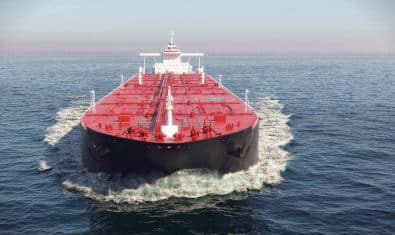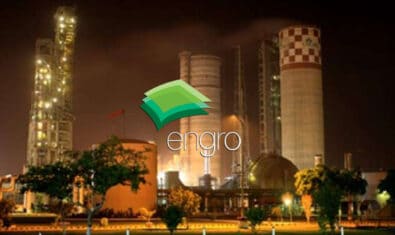Warmer winters and sparse rainfall have dried up southern Europe. Water scarcity in Italy, France and other countries is threatening this year’s harvests. What to do?
In Europe, many farmers are worried about their crops because there is already too little rainfall this early in the year.
Having enough precipitation in winter is crucial to replenish groundwater reserves, according to Samantha Burgess, deputy director of the EU’s Copernicus Climate Change Service.
“When we look at maps showing soil moisture, we’re seeing a soil moisture deficit,” she said.
In many parts of Europe, this season has been drier than ever before. Though it is still winter, countries from the UK, Germany and the Netherlands to Spain, Belgium, Portugal, France and Italy don’t have enough water. In southern Europe, this is already leading to wheat and barley crop failures.
The last few summers have been exceptionally hot, causing entire lakes and rivers to dry up in southern Europe. In Italy alone, water scarcity destroyed a large proportion of the rice harvest in just a few weeks. In some countries, water supply restrictions had to be put in place.
Due to the climate crisis, dry periods are set to become longer and more severe in future, especially in summer. If there is also too little precipitation in winter, droughts will last longer and the following summer will be even drier.
So how can farmers, communities and countries prepare to mitigate the impact of drought?
Capturing and storing rainwater in reservoirs
When she spoke to DW last summer, Andrea Colombo of the Po River District Basin Authority in Italy demanded that the infrastructure for different retention basins be expanded.
This would allow winter rain and meltwater to be stored in villages, towns and regions near the Italian Alps for use in the spring. Countries in other regions of the world have already implemented this idea.
Singapore, for example, has two different water systems. One for wastewater, another for collecting rainwater throughout the city. The water is processed into drinking water and stored in huge reservoirs.
Of course, the effectiveness of these basins depends on how much precipitation falls in winter. In the Italian Alps, this season’s snowfall has been half the usual amount, according to local environmental organization Legambiente. And the Po, the country’s longest river, is only carrying a fraction of the usual amount of water.
The organization warns that the situation is critical and requires urgent action.
“We have to reduce the withdrawals for different sectors and uses before we reach the point of no return,” Giorgio Zempetti, head of Legambiente, said in a press release in late February 2023.
The organization is calling on the new Italian government to implement a national water strategy that also promotes circular water management. This would include treating and using the water more often to reduce the environmental impact and conserve groundwater.
Italy’s agriculture minister Francesco Lollobrigida described the water scarcity in early March as a “state of emergency that requires short and long-term measures.” What is still lacking, however, is a concrete strategy.
Saving water through pipe and reservoir maintenance
Another way to save water quickly and effectively would be to plug the holes in the existing water infrastructure and fix pipe leaks.
Italy, for example, loses 40% of its water to leaking pipes. The figure is 20% in France and 30% in Portugal, according to the European Association of Water Service Providers. But the volume of water lost is highest in Bulgaria (60%) and Romania (more than 40%).
On average, a quarter of drinking water in Europe is lost due to poor infrastructure and inadequate water management.
In response the EU proposed an update of its water directive in late 2022. It has called on member states to better monitor water wastage and leaks, as well as investing in appropriate measures and data collection.
Reusing and treating water several times over
According to the European Commission, there is also massive potential for treating and reusing water.
Currently, only 0.5%, or about one billion cubic meters, of the fresh water withdrawn in the EU is treated and reused. With sufficient treatment plants and the appropriate infrastructure, water could be used much more efficiently, which would significantly reduce the pressure on fresh water reservoirs and dependence on natural water sources.
For example, in Italy, treated water accounts for only 5% of artificial irrigation. The rest comes from increasingly scarce freshwater sources. Agriculture currently consumes 30% of all fresh water in the EU.
Farmers could also transition to more drought-resistant crops, says Burgess.
Preparing for water scarcity this summer
Should the situation continue to worsen, authorities in France have already announced they may impose restrictions on water use in 87 municipalities.
These measures, such as banning filling private swimming pools, are usually only rolled out during extreme droughts at the height of summer.
Copa-Cogeca, an association of European farmers, told DW the situation is “worrisome.”
Climate specialist Samantha Burgess agrees that indications for water supplies in the coming warm months are not good.
“Unless we have a series of storms or rainfall events that have a lot of moisture, what we’re seeing in the maps of soil dryness at the moment suggests we are facing a very dry spring and a very dry summer,” she said.
Burgess assumes there will be restrictions on water use in affected regions in Europe this summer. However, that doesn’t necessarily leave us high and dry.
“Climate change impacts are here and they’re impacting us right now,” she said. “There are a lot of different things that individuals, businesses and society can do.”

























